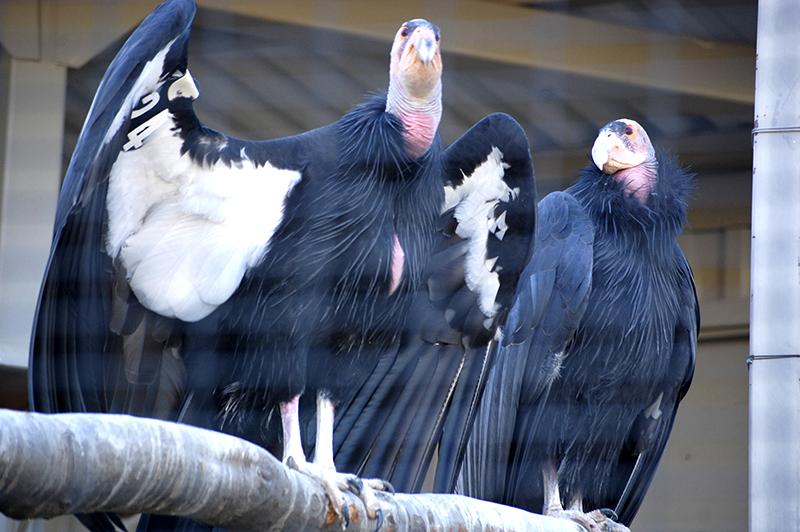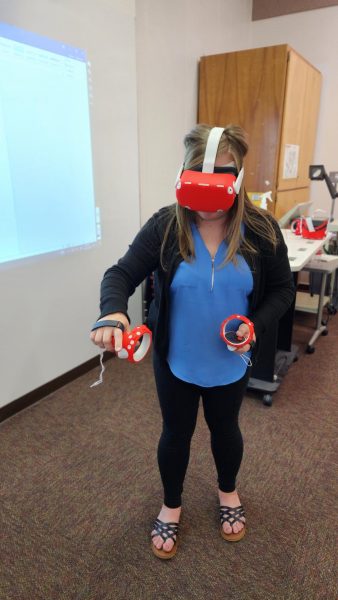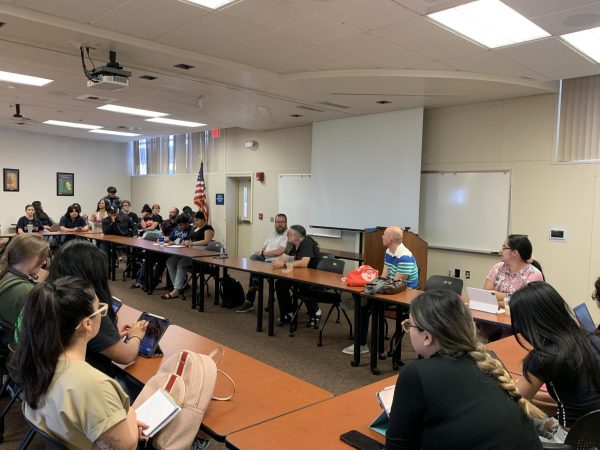CALM is Kern’s true home of the condors
December 2, 2016
The California Living Museum added two new creatures to its menagerie on Nov. 18. For the first time, a pair of male California condors were transferred to CALM from the Jonsson Center for Wildlife Conservation in Clackamas, Oregon in partnership with the U.S. Fish and Wildlife Service California Condor Recovery Program.
“The California condor was the first species listed under the Endangered Species Act in 1973 and their losses are directly due to human impact,” said CALM’s curator Donald Richardson. “We are so fortunate to be selected by the Condor Recovery Program to exhibit these magnificent birds and to be part of bringing the message of their conservation needs and their recovery to Kern County.”
The pair were identified only with numbers. The most active one was number 24. He huffed and puffed somewhat as the photographers and reporters clamored around their enclosure looking for the best angle and the right light.
His partner was less impressed by the human activity, which clearly included nothing he wanted.
California condors do not look like the majestic bird of prey one might imagine. Several guests who came to the zoo unaware that new arrivals were landing that day were heard calling them vultures. That is actually not far from the truth. California condors are scavengers.
They locate carcasses with their eyesight and not by smell. They usually travel in groups, boasting 9.5 foot wingspans, they can reach speeds of 55 mph and soar as high as 15,000 feet.
In 1982, there were only 22 known to exist in the wild. The last known free-flying condors were taken in to captivity in 1987 in order to save the species from extinction.
The known wild population dropped to zero between 1988 and 1991. The California condor Recovery Program started reintroducing captive-bred condors back into the wild in 1992.
Today, there are 240 free-flying birds in California, Arizona, Utah, Baja California and Mexico with another 210 in captivity.
Lead poisoning has been the primary factor retarding the recovery of the California condor. It’s also thought to be the one of the main factors that drove the species to near extinction in the first place.
The source of the lead that is poisoning the birds has been from animals shot by hunters and not collected afterwards. The bullets break apart into small fragments and permeate the resulting carcass.
When these carcasses are invariably fed upon by condors, they suffer from lead poisoning and without human intervention and die.
In 2013, Gov. Jerry Brown signed legislation that will require the use of non-lead ammunition to be used when taking wildlife with a firearm in California by 2019.
You can see the new condors at CALM seven days a week, from 9 a.m. to 4 p.m.
Admission to CALM is $9 for general admission; $7 for seniors (60+); $5 for ages 3-12; children under 3 are free.














